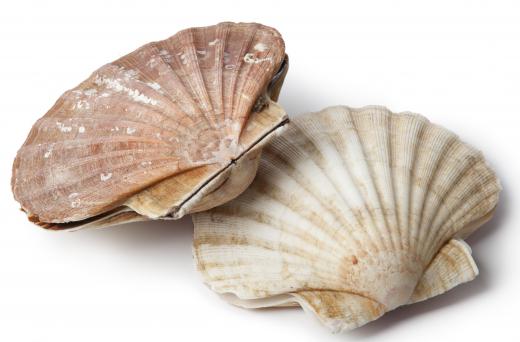A scallop dredge is a fishing device that is capable of scraping along a seabed to capture edible mollusks. Some dredges are designed specifically for scallop fishing, though very similar devices are also used to obtain oysters, crabs and various other species that live on the ocean floor. These dredges typically are constructed from steel frames and metal mesh netting, and they are towed behind motorized fishing vessels. Fishing dredges can cause substantial damage to a seabed and result in the undesirable bycatch of species such as octopuses and starfish.
Scallops are a type of edible shellfish that are present throughout the oceans of the world. These bivalve mollusks have fan-shaped shells and are filter feeders that live on seabeds. Most scallop fishing utilizes dredges, though there are a few other methods. Long rakes were used in the past, though that method is less effective than a scallop dredge and is no longer as common. In addition to being fished for in the wild through those methods, scallops also can be farmed in a type of aquaculture.

The basic construction of a scallop dredge consists of a mesh net attached to a metal frame. This device is lowered to the seabed by a motorized fishing boat and then towed. The leading edge of the net is open, allowing the frame to scoop through materials present on the sea floor as the fishing vessel tows it forward. Small objects pass through the net, and any scallops on the sea floor become trapped inside. Several of these dredges are often towed at once, and large vessels can deploy 20 or more over each side.

After the net of a scallop dredge has been filled, the device can be hoisted to the surface for the contents to be processed. Many species that feed on mollusks, such as dog whelks and starfish, are caught along with the scallops and must be separated out. Other species can also be part of this bycatch because anything larger than a scallop can become trapped in a scallop dredge.

An alternative to fishing with a scallop dredge is hand gathering, which typically is accomplished by a diver who is equipped with an underwater breathing apparatus. This type of scallop fishing can be less destructive to the ecology of the seabed, though it is a more labor-intensive endeavor. Scallops caught in this manner tend to reach the market faster because of the extra processing that dredge-caught scallops typically undergo.
